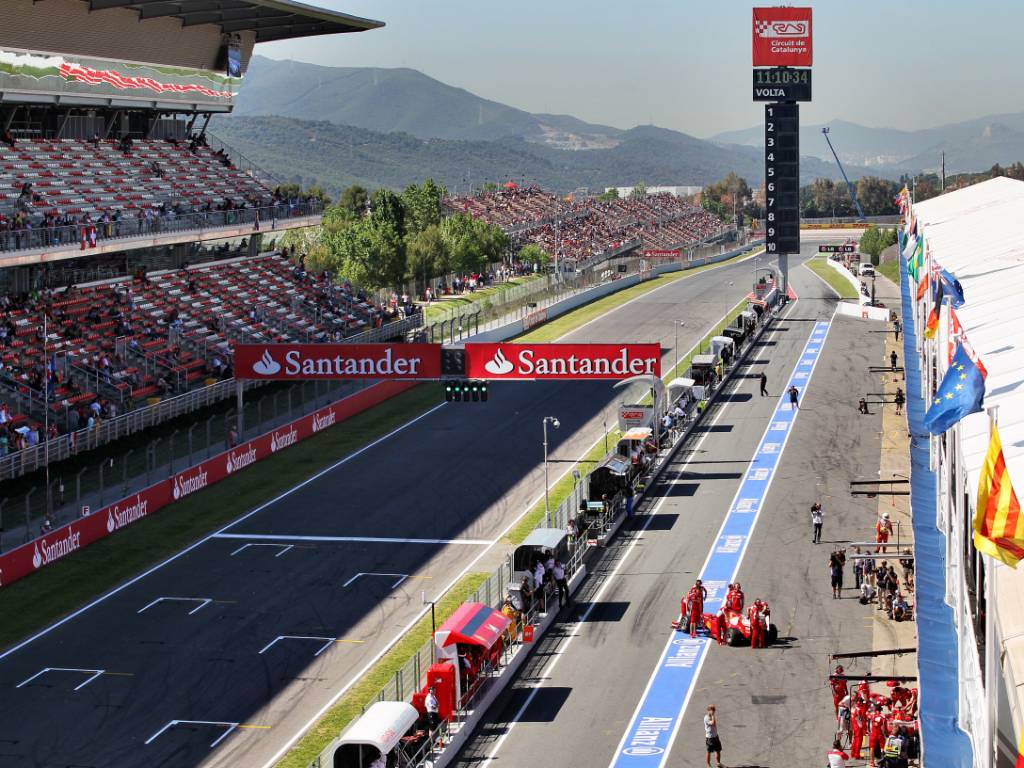If you have ever had the opportunity to drive The Circuit de Catalunya (still informally known simply as Barcelona), then don’t hesitate for a second. The circuit hosts Formula 1 and MotoGP races, it has seen the DTM and LeMans Europe series, and you can also find GT and rallycross races here. It also sees an awful lot of testing. Barcelona is essentially a well-known circuit where you can find a whole lot of fun.
If you ask professional racing drivers what they like best about the circuit here, they agree that it’s the combination of the various corners, long straights and constantly changing conditions. If you ask me, I’ll tell you why I really like Barcelona—because in the 24h series, I finished second with the Czech RTR team, and because it has numerous corners with a changing radius, and because the city of Barcelona is a great city for partying.

The circuit was built in 1991, and Formula 1 races were held here immediately; the first motorcycle grand prix, originally the European GP, was held a year later. The government invested in it at the same time as the construction of the Olympic facilities, and in 1992, when the Olympics were held in Barcelona, the circuit was used as the start and finish lines for the cycling team time trials. But it wasn’t built because of the Olympics. You can find the original city racetrack in Barcelona under the name Montjuic, but it was very dated, and the Spaniards wanted to get Formula 1 and other big races back. Races had not been held there since the tragic 1975 grand prix.
Plans to build a circuit northwest of the city were drawn up in the middle of the 1980s. Construction work started at the beginning of 1989, and the first race run here was the national touring cars championships on 10 September 1991. The Spanish grand prix was then raced two weeks later. The track is 4,675 metres long, has sixteen corners, and the circuit record is held by Valtteri Bottas with a time of 1:18.183. Throughout the circuit’s history, it has not changed much—a chicane was added before the finishing straight and is used in Formula 1 races but omitted for in others. It has had a new tarmac since 2018.

The constant and sunny weather attracts many teams for regular testing, and the Formula 1 organisers regularly include Barcelona in the official testing calendar. Thanks to this, teams have a lot of data about the circuit, and, for example, Spanish driver Pedro de la Rosa will enthusiastically describe to you how the conditions change during the day. He says that the track is fastest from nine to eleven in the morning, because the air is cold and gives the car more downforce, and the engine has greater power output. The wind then starts blowing unpleasantly, and it was the wind which most probably caused the accident with Fernando Alonso during testing in 2015. The accident still does not have much in the way of a reasonable explanation.

As already mentioned, the combination of the local corners makes the circuit an excellent place for testing and a demanding track to race. Modern circuits mostly have slow corners which are shaped like a five-koruna coin or a hairpin, but most of the corners in Barcelona have a long radius, so it is important to balance a car’s setup so that it sits well and that the tyres also last. The load on the front left tyre is therefore enormous. “For example, corner number three, where Alonso crashed, is exactly the spot where you can gain half a second, but at the same time, there is a risk of rapid wear on the left front tyre, so downforce is everything here,” Pedro de la Rosa explains. “The exit from the second corner makes it difficult to get the line right, and most drivers have trouble with it.” When you look at the onboard readings, you can see that Formula 1 cars travel at a speed of 250 km/h.
Just as critical is the Seat a La Moreneta corner section, where you brake heavily before the first area, and the next part of the section then decides how fast you will be on the exit up the hill. “You are in second gear here, and you have to change direction quickly,” says Rosa. “Then you go into third and fourth gear, until you reach Campsa corner, which you take in third. It’s another very difficult corner because again its exit is blind.” Formula 1 drivers are in seventh here and travelling at a speed of over 260 km/h…
The final chicane is just as difficult, and the exit decides how fast you enter the long finishing straight.
In summary, it’s a wonderfully balanced circuit, designed so that spectators can see well, located thirty kilometres from the centre of Barcelona, and with corners so well designed that you have to not only turn the wheel but also think. If somebody offers you the chance to go round the track, especially in a Formula 1, don’t hesitate for a moment! With Ricard & Bonette, you go round here first in a Formula Renault, and then you can do six laps in a Formula 1 Prost which raced the Grand Prix events in 1997–2001. You can find more details about the event HERE >


